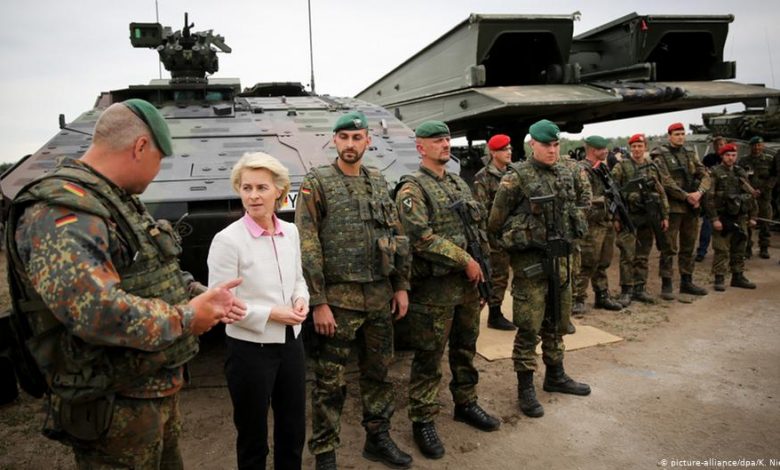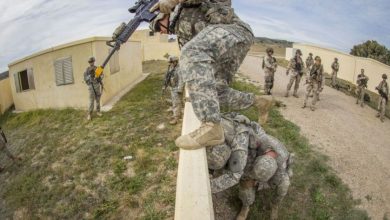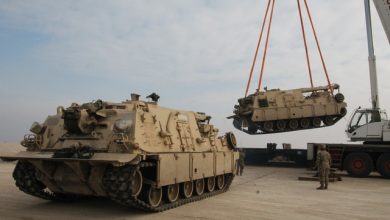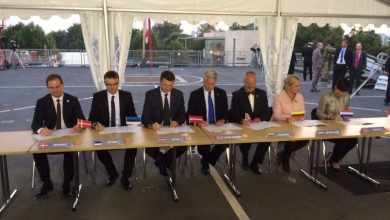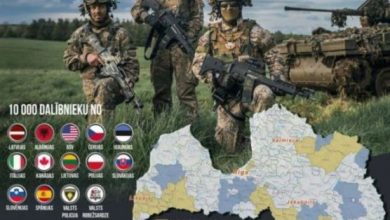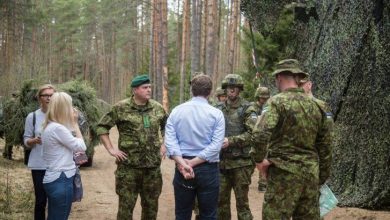US military in Poland: come to stay
For almost 20 years there has been debate about the deployment of NATO troops in Eastern Europe. Now in Poland a battalion is placed under US command. And led by the Germans, British and Canadians – in the Baltic countries.
This weekend in Poland is an unplanned holiday. In the central squares of Warsaw, Krakow and other cities, the arrival of American troops is noted. A military band is playing, tanks and other military equipment are on display. This is a special day in the history of Poland: the last time most of the Poles welcomed foreign soldiers to their land more than 200 years ago – and this was Napoleon’s army.
This time we are talking about American soldiers. The idea of deploying a US military base instead of Germany (36,000 American troops are now deployed here) in Eastern Europe has been a subject of debate. After all, Germany after the fall of the Eastern Bloc no longer needed protection, and the costs of deploying troops on its territory were quite high.
Meeting in Zagan
But it didn’t go beyond conversations. However, in 2014, Russia annexed Crimea. The then Foreign Minister of Poland, Radoslaw Sikorski, called on NATO to strengthen its military presence with the two brigades necessary to defend his country.
And now the first American armored brigade arrived in the country, constantly deployed in Colorado: 3,500 soldiers and officers, 87 tanks, 400 Humwee vehicles. It is designed to strengthen NATO’s eastern flank as part of Operation Atlantic Resolve (“Atlantic Resolve”).
This weekend the staff of the brigade will be solemnly met in the Polish city of Zagan. Here, 100 kilometers from the German border, the compound’s headquarters will be located and the main part of the armored brigade will be located.
Apart from Poland, some of its small units will be deployed on a rotational basis in Estonia, Latvia, Lithuania, as well as in Hungary, Romania and Bulgaria. The crew and equipment will change every nine months.
Baltic concerns
The deployment of the American armored brigade in Poland will be followed by further steps by the Alliance. By the end of January, the first forward-based battalion of NATO forces will be stationed in Lithuania under the command of the Federal Republic of Germany. Its structure, in addition to German soldiers who are being conducted on January 19 from the Bavarian Oberfichtach, will include 500 troops from other countries. 1,000 NATO troops under British command will be stationed in Estonia. And the same amount – under the command of Canada in Latvia.
Another NATO battalion, commanded by the United States, is planned to be deployed in the north-eastern region of Poland, near the city of Suwalki. It is located in the center of the so-called Suwalki corridor – a particularly vulnerable stretch of the Polish-Lithuanian border about 100 km long, adjacent to Belarus in the south and the Kaliningrad region of Russia in the north.
Military experts have long been sounding the alarm: if Russia launches a hybrid or conventional military campaign against one of the Baltic countries, it can easily cut off the Baltic states from its NATO allies. After all, overland communication of the alliance with the Baltic states passes along the Suvalki corridor. Despite the fact that they significantly strengthened their armed forces against the backdrop of Russia’s actions towards Ukraine in 2014, Latvia, Lithuania and Estonia are still quite vulnerable.
The most important decision
After the collapse of the USSR, NATO assured Moscow that until the security situation began to deteriorate, until the member countries of the alliance would not deploy large military units in the territories east of Germany for a long time.
However, in connection with the actions of Russia in Ukraine at the NATO summit in Warsaw in July last year, it was decided to strengthen the eastern flank of the alliance. This includes the deployment of NATO units in Eastern Europe on a rotational basis and the conduct of constant maneuvers. That allows you to deploy soldiers and equipment, but only for a short time. The decision to strengthen the eastern flank of NATO was one of the most important decisions taken at the Warsaw summit of the North Atlantic Alliance. However, after it became known that Donald Trump will become Obama’s successor as president of the US, there is growing concern in the Baltic region that it is not clear whether the new US president will support this decision. Or he, having agreed with Moscow, will simply divide the world into new spheres of influence.
After all, Trump had previously stated that the United States should not protect countries that do not fulfill their financial obligations within NATO. True, this does not apply to Poland and the Baltic states, which have no problems with financing military spending.
Protests from Moscow
Moscow protests against the deployment of battalions of the North Atlantic Alliance in the Baltic countries and Poland. Russian state media call these actions an aggressive offensive. However, they do not say that NATO units whose purpose is to ensure security in the territory from Estonia to Romania are numerically significantly inferior to the forces of the allies, which until 1989 defended West Berlin.
Meanwhile, since 2007, Russia has been conducting military maneuvers in its western borders or in neighboring Belarus, in which tens of thousands of soldiers participate. During these exercises, strikes against Poland and Estonia are also being practiced. Against the background of the conflict between Russia and Ukraine, this inspires groundless fears both for Poland and the Baltic states.
This post is also available in:
 English
English  Русский (Russian)
Русский (Russian)

